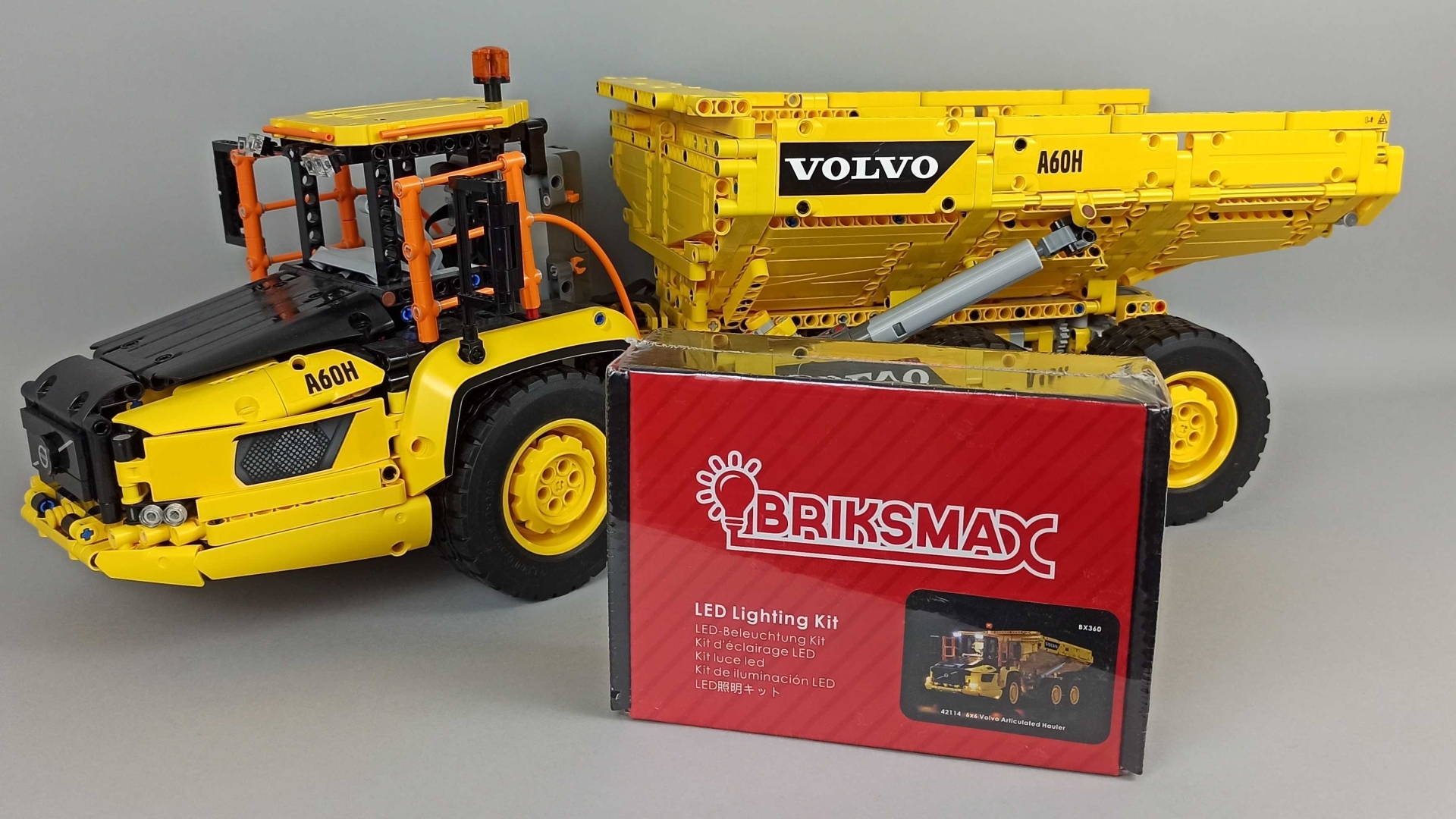Something new this time. Ready to use light pack for LEGO models. The box itself is branded as Briksmax, but it belongs to Lightailing and sold directly by them.
Basically it’s “absolutleynonlego”, but let’s be honest – making such large light setup with so many points, using only LEGO elements, especially in C+ era (with only 8 lights per HUB) would cost more than set itself, not to mention the space it would require 🙂
The lights show shown here today is the max version, that costs $64. Is that price fair? It’s up to you. For me overal quality of the pack justifies the price, especially extremely detailed step-by-step instructions.
I got this pack for review, and by today’s standards it’s a sponsored post, there’s even an affiliate link – if You would like to help me get more LEGO (or more snacks for Loki), you can buy something from Lightailing using this link 😉
https://www.lightailing.com/?ref=nXdO06i-y5ki
But it will no be a overexcitement review, I’ll just show you how all these things are made to the final stage.
So, let’s start:
Everything needed for lighting up the 42114 is concealed in a box with aprox. dimensions of 17x12x5cm. I’m really surprised how well all the contents were packed, from wrapping of main box to each component in their separate bag.


And after opening the box we have this:

Let’s start with the papers. Three booklets, each larger than previous one:


Smallest one is just a leaflet, showing what can you do (in different languages) if you are happy or unhappy efter the purchase:


Second book shows basics of connecting the electronic parts together, adding batteries etc.

Third on is much more interesting, filled with pictures. And shows in a very, VERY detailed way how to guide every wire and install every LED within 200 steps.




Let’s get back to the electronics. Each component is packed in its own bag. The quality is visible here.

List of parts:
E02 – AA Battery Holder
G01 – Adhesive Squares
F01 – Multiple Function Boards
D02 – 8 port Expansion Boards
D03 – 12 port Expansion Boards
B07 – Warm White Strip (cab)
D04 – 5cm Connecting Cables
D05 – 15cm Connecting Cables
D06 – 30cm Connecting Cables
A32 – 10cm Yellow Dot Lights
A12 – 15cm Yellow Dot Lights
A11 – 30cm Yellow Dot Lights
A04 – 15cm Warm White Dot Lights
A02 – 15cm White Dot Lights
A35 – 15cm Warm White Dot Lights (L)
A03 – 30cm Warm White Dot Lights
A09 – 30cm Red Dot Lights
Few pictures of the bags:




And here’s the interesting fact: One of the bags contains original LEGO pieces. They are used for front lights (in order to properly mount the LEDs, tiles should be replaced with plates, which have a small hollow under the stud, allowing the small LED to fit there), clearance lights. And service lamp under the bonnet. Really.



Yellow Dot without any additional bricks:

There are two options for powering the lights. USB or 3AA battery box. In case of using battery box model keeps its mobility. And the way how it was fixed on the chassis made me smile a bit 🙂


Assembly time!
As I mentioned earlier, the assembly process is very well detailed and does not leave the user with bunch of wires in hand and hope that they will fit somewhere.
The LEDs are fixed in place in two ways – directly under plates/tiles and with using two side adhesive tape.
The assembly process is divided into sections, based on the model we are using. In this case, 42114; starting from the roof (working lights/revolving light/cab lights), trough front bumper and engine bay (yellow service lamp), ending on rear lights and clearence lights.
I’d like to point that instructions show that all the wires should be twisted to form one large bundle on each section. I did not made that, because I’m planning to use these lights on our alternate models too and I preffer to have more or less straight wires. The working lights on the roof are the only LEDs fixed in place with adhesive, factory cut to small squares. To properly align these small tape pieces I suggest using needle. I’m not too pleased with them, but so far (few weeks) they hold lights in place. The key thing here is placing the wires correctly to avoid tension.

The cab light mentioned above is made from two LEDs on the circuit board. Again on the tape, placed on one of the 3×11 roof panels.

It’s the last light point mounted on tape, but the tape itself will be used few more times to fix the extension boards in various places of the frame.

The revolving light blinks thanks to this potentiometer, also mounted on tape. The frequency of the blinking can be set with that gauge.

The best detail is the service lamp under the bonnet – but why yellow?

The longest extension board is placed right in front of the first axle, and powers all this mess.

Rear also has some wires to be dealt with, because there are rear lights on the tipping bed and clearance lights.


At the end we power all of this from battery box. Did I mentioned that I like very much how it was fixed in place?
42114 comes with four wire clips on the main joint, keeping the wires in place. Lightailing battery box fits tightly under them.

Here’s how it looks in real life:
And here are my pictures (need to change my photo corner again, Volvo barely fits there). At editing the photos I have noticed that I bent on of the rear lights too. Eh 🙂






I have never had occasion to test light pack made for specific set, to be honest I expected bunch of wires with LEDs stuck in on bag, few pictures showing where lights should be placed and nothing more.
I was pleasantly surprised by overall quality of this light set.
And will for sure use it again in our alternate models 🙂
https://www.lightailing.com/?ref=nXdO06i-y5ki
Pros:
– High quality packaging
– Well made components
– Two types of power source
– Many different light points on the model
Cons:
– few pieces must be fixed with tape
– two tones of ligts on front, why all lights can’t be pure white?
– lots of patience needed to place all the wires aestetically
– price?


